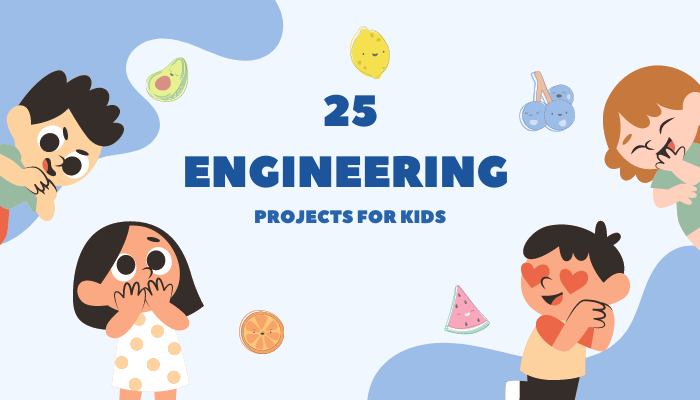Introduction to Sick Science
Sick Science has taken the world by storm, captivating both young and old with its mesmerizing experiments and mind-boggling results. But what exactly is it?
In simple terms, it is the art of conducting science experiments that are not only educational but also incredibly fun. From creating erupting volcanoes to making objects disappear, Its experiments never fail to amaze and inspire curiosity.
Why Sick Science is so popular
The popularity of Sick Science can be attributed to several factors.
Firstly, the experiments are designed to be easily accessible and suitable for all ages, making them perfect for kids, parents, and educators.
Secondly, Its experiments are not just entertaining, but also educational, allowing participants to learn and understand scientific concepts in a hands-on and engaging way.
Lastly, the use of everyday materials and household items makes it convenient and affordable to conduct these experiments, adding to the appeal.
The science behind Sick Science experiments
Behind every Sick Science experiment lies a scientific principle waiting to be discovered. Whether it’s exploring the properties of density, understanding the chemical reactions behind color changes, or demonstrating the power of air pressure, each experiment is carefully crafted to showcase a specific scientific concept.
By conducting these experiments, not only do participants get to witness the magic unfold before their eyes, but they also gain a deeper understanding of the underlying science.
Essential materials for Sick Science experiments
To embark on your Sick Science journey, it’s important to gather the essential materials needed for the experiments. The good news is that most of the items can be found right at home or purchased inexpensively at a local store.
Some common materials include baking soda, vinegar, food coloring, balloons, plastic cups, and dish soap. Having a well-stocked science kit on hand is always a good idea, which can provide additional supplies and tools for a wider range of experiments.
Safety precautions for Sick Science experiments
While Sick Science experiments are generally safe and enjoyable, it’s crucial to prioritize safety at all times. Adult supervision is highly recommended, especially when young children are involved. Protective eyewear and gloves should be worn when handling potentially hazardous materials.
It’s important to read and follow all instructions carefully, and to be aware of any potential allergies or sensitivities to specific ingredients. By taking the necessary safety precautions, you can ensure a fun and risk-free experience.
A step-by-step guide to conducting Sick Science experiments
Now that you have your materials ready and safety precautions in place, let’s dive into the exciting world of Sick Science experiments. The following step-by-step guide will walk you through the process of conducting a basic yet fascinating experiment – the classic vinegar and baking soda volcano.
- Gather your materials: You will need an empty plastic bottle, baking soda, vinegar, dish soap, food coloring (optional), and a tray or container to catch the eruption.
- Prepare the volcano: Create a volcano shape by molding clay or playdough around the plastic bottle. Be sure to leave an opening at the top for the eruption.
- Add the ingredients: Pour about a tablespoon of baking soda into the bottle. If desired, add a few drops of food coloring for a more vibrant eruption. Then, pour vinegar into the bottle until the volcano erupts. To create a foamy eruption, add a small amount of dish soap to the vinegar.
- Observe and learn: As the vinegar reacts with the baking soda, carbon dioxide gas is released, causing the volcano to erupt. Take note of the color changes, the fizzing sound, and the formation of bubbles. Discuss the chemical reaction that occurred and the scientific principles behind it.
Tips and tricks for mastering Sick Science experiments
To truly master the art of Sick Science, here are some tips and tricks to enhance your experimentation skills:
- Start with simple experiments: Begin with basic experiments that require only a few materials and steps. This will help build your confidence and understanding of the scientific concepts involved.
- Take notes and document your experiments: Keep a notebook or journal to record your observations, hypotheses, and results. Documenting your experiments will not only help you remember the details but also allow you to track your progress and make improvements.
- Explore variations and modifications: Once you have mastered the basics, don’t be afraid to experiment with variations and modifications. Explore different combinations of materials, change the quantities used, or try different experimental conditions. This will deepen your understanding of the scientific principles and unleash your creativity.
- Share and collaborate: Join online communities or local science clubs to connect with fellow Sick Science enthusiasts. Sharing your experiences, asking questions, and collaborating on experiments will enrich your learning journey and open doors to new discoveries.
Fun and educational Sick Science experiments to try at home
Now that you have acquired the knowledge and skills to conduct Sick Science experiments, here are a few fun and educational experiments to try at home:
- Dancing Raisins: Place a few raisins in a glass of carbonated water and watch as they dance and float up and down. This experiment demonstrates the concept of buoyancy and the release of carbon dioxide bubbles.
- Magic Milk: Pour some milk into a shallow dish, add a few drops of food coloring, and then carefully drop a small amount of dish soap onto the milk. Witness the mesmerizing swirls and patterns that form as the soap reacts with the fat molecules in the milk.
- Lemon Volcano: Cut a lemon in half and squeeze out some of the juice. Sprinkle a small amount of baking soda onto the cut surface of the lemon. Observe the fizzing reaction that occurs as the acid in the lemon reacts with the baking soda.
Sick Science resources and websites
To further enhance your Sick Science journey, there are numerous online resources and websites available. These platforms provide a wealth of experiment ideas, instructional videos, and scientific explanations to deepen your understanding. Some popular Sick Science resources include:
- Steve Spangler Science: An educational website featuring a wide range of Sick Science experiments, videos, and resources for all ages.
- Sick Science YouTube Channel: A YouTube channel dedicated to showcasing the magic of Sick Science through entertaining and educational videos.
- Science Buddies: A website offering a vast collection of science fair project ideas, including many Sick Science experiments.
Conclusion: Becoming a Sick Science Expert
By mastering the art of Sick Science, you can unlock a world of wonder, curiosity, and scientific exploration. The combination of entertainment and education makes it a perfect activity for individuals of all ages. From understanding the science behind each experiment to conducting your own variations, Sick Science offers endless opportunities to learn, discover, and have fun. So gather your materials, follow the safety precautions, and embark on a thrilling journey of exploration and discovery. Become a Sick Science expert and let your inner scientist shine!
Remember, the key to success lies in practice, curiosity, and a willingness to embrace the unexpected. So go ahead, grab that baking soda and vinegar, and let the magic of Sick Science unfold before your eyes!
Read also: What is AICE Marine Science? Best Guide




